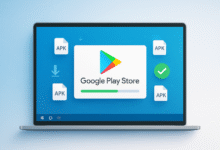
One of the key cases in which identity fraud happens is when the information is stored on the Internet and got into the wrong hands. This will, unfortunately, facilitate the targeting and financial losses. There are also ways to protect yourself and to protect financial information if you wish to protect your personal information online.
Related: iPhone Security Tips: How to Secure Your Kid’s iPhone
Protect Your Personal Information Online
Only Use Secure Websites
One of the key methods hackers use unsecured websites to collect information, where you can insert your credit card details and/or personal information to make an acquisition. Before entering any personal information, verify that the web is safe by seeking “HTTPS” in the browser. In addition, you can search for a privacy policy, a protected seal, and contact information to check that this is a legitimate website.
Utilize Data Governance
Data governance is beneficial as the market possibilities shift in monitoring organizational data properties and their effects. It also ensures reliable and correct monitoring while enhancing regulatory standards. You should provide more and cleaner information to enhance the analysis and ensure that you are able to decide correctly in the business. This will ultimately lead to more profits and an even improved business image.
It’s really popular via the telephone or email. Any users get a text message. If you get a message from an organization or individual, you should be careful if you don’t talk to them daily.
Avoid Using Shared Wi-fi Networks
If you spend time in coffee shops or libraries and you have a wireless network open, stop jumping on it or lose yourself. If you insert passwords or enter bank account information, the shared, public and free wi-fi networks will invite the wrong person to access your data. Wait before you return home and pay for your bills online to make some orders.
Use Strong Passwords
More powerful passwords can also reduce the chance of someone breaching the various accounts. For any website that contains your bank or credit card information, it is also necessary to use another password. When anyone receives a password, if you have several keys, they will not be able to enter any of the accounts. Including several numbers, upper-case letters, and icons to make the password special and difficult, according to experian.com. The passwords can also include up to five words that don’t typically appear in the same sentence.
By using a password manager, you can also get a better degree of protection. Password managers are helpful because they keep all your passwords sorted and easily remembered for your various accounts. The technology also helps you create better passwords when your accounts are created or modified.
Related: Protect Your Business Organization with 6 Assured Cybersecurity Practices
Use Two-Factor Authentication
Another way to apply an additional security layer to your accounts is by using two-factor authentication. You should submit a passcode when your passcode is entered successfully to check if you hold the account.
It’s also crucial not to open random links or connections that you do not know sent by people that make accessing the information on your machine or smartphone easier for hackers. The email through looks like you’re from your bank, gas, or tax office and this will lead you to have confidence in it. Look for any odd e-mail addresses or grammatical mistakes that is probably an indication of a fraud. The logos used may also look crooked or pasted.
Get Extra Protection
Take full advantage of tools to secure your machine and always seek something that can jeopardize your device’s safety, according to nytimes.com. It is vital to get the internet protection kit stable and upgraded, which often works such that your device is never exposed to malware attacks. Cyber hackers are constantly searching for new ways of downloading malware and will use modified software to test new strategies.
Create Firm Privacy Settings
Be sure that any social media site you control is able to visit the privacy settings daily. Only let your buddies see your posts rather than cause all to be informed to the public. Must be aware that rules will be changed from time to time on every social media site so that your sensitive details are never made public. You must also be proactive every few months while changing the settings so that you can not share your information with organizations who may buy your details or search history from the social media site.
While it can be faster and convenient, avoid connecting to other websites and accounts via your social media login information.
Similarly, when communicating with family members and acquaintances, you want to stop revealing so many personal details online. Many people err online to share photographs of their driver’s license, license plate, and even address, which the wrong person may see. Even publishing your telephone number will give hackers plenty of data and can endanger their security.
Close Your Old Accounts
Shut down any old email or social media accounts you haven’t used for a few months. All the information saved on your accounts, including your personal pictures, e-mail, attachments, and documents that you have received or sent in the past, is readily accessible.
Look Out for Phishing
It can be so convenient to be a victim if you don’t know about phishing. Cyber attackers are involved in exchanging your personal data, which contains your passwords, financial records, and username. Once access is given, malware is installed to perform identity theft.
Final Verdict on to Protect Your Personal Information Online
Knowing the right ways to defend yourself online will reduce the chance of losing and facilitate more shopping. You should become more careful to make getting to your information more difficult for hackers.












3 Comments